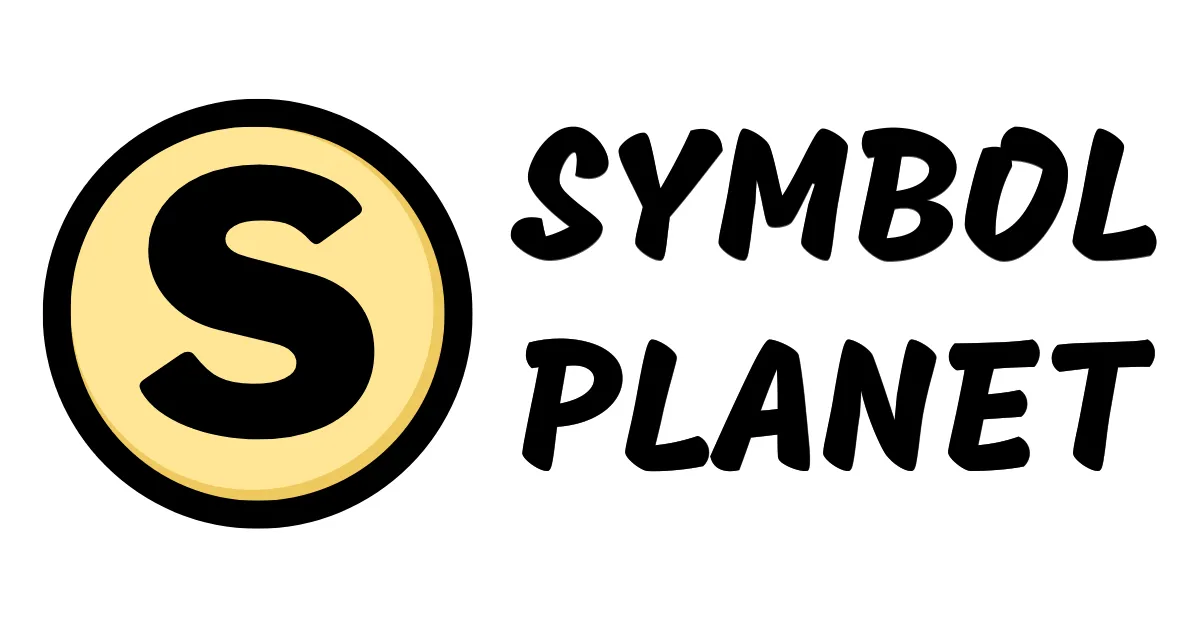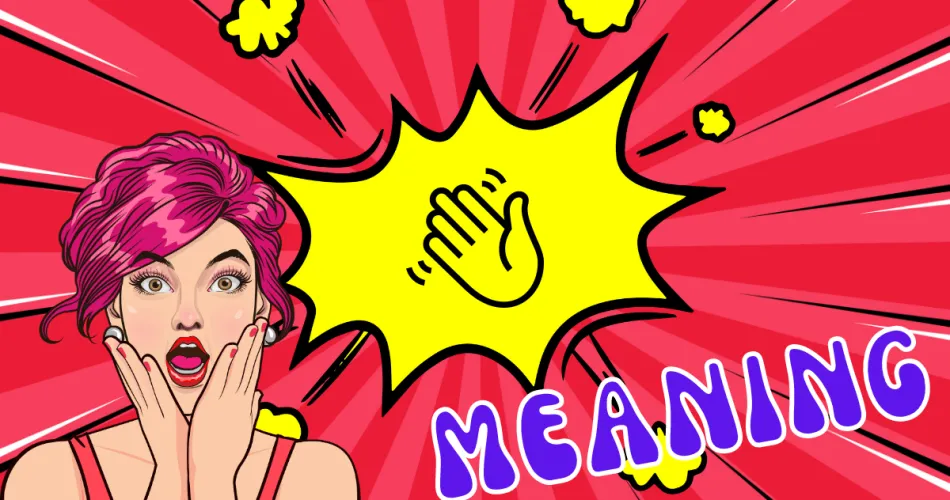Here’s what we’ll cover:
- 👋 waving hand emoji meaning
- How do you reply to 👋 waving hand emoji?
- What does 👋 waving hand emoji mean from a girl?
- What does 👋 waving hand emoji mean from a guy or boy?
- What does 👋 waving hand emoji mean on Snapchat?
- What does 👋 waving hand mean in Texting or Chat?
- What does 👋 waving hand emoji mean on Instagram?
- What does 👋 waving hand emoji mean on TikTok?
- What does 👋 waving hand emoji mean in slang?
- Cultural differences in 👋 emoji interpretation
- Emoji etiquettes
- Possible combination
- Misinterpretations to avoid
👋 waving hand emoji meaning
The 👋 waving hand emoji means a friendly gesture or a way to say hello or goodbye. It is one of those versatile emojis that can convey multiple meanings depending on the context.
1. Friendly Greeting
When someone uses the waving hand emoji, they are trying to be friendly and initiate a conversation or acknowledge someone’s presence. It’s like a virtual wave that replaces the physical act of waving hello.
- “Hey, let’s catch up for coffee sometime! 👋”
- “Thanks for helping me with the project. You’re amazing! 👋”
2. Goodbye
The waving hand emoji can also be used as a lighthearted way to say goodbye. Instead of a formal farewell, consider using this emoji to bid farewell with a playful touch.
- “That’s it for today’s meeting. Have a great weekend, everyone! 👋”
- “Time to sign off. Catch you all tomorrow! 👋”
Overall, the waving hand emoji is a versatile tool for expressing friendliness and exchanging greetings. Whether in virtual conversations or sending off a cheerful goodbye, this emoji adds a touch of warmth and playfulness to the message.
How do you reply to 👋 waving hand emoji?
When someone waves at you with the waving hand emoji, you can reply by saying “Hey there!” or “Hello!” to acknowledge their greeting. Other common replies can include “Hi!” or “How’s it going?” as a friendly response.
- “Hey there!”
- “Hello!”
- “How’s it going?”
What does 👋 waving hand emoji mean from a girl?
The 👋 waving hand emoji from a girl means a friendly greeting or a way of saying hello. It can also be used to signal that she is acknowledging someone or saying goodbye. The emoji conveys a warm and light-hearted tone, often accompanied with a smile or a upbeat attitude.
- “Hey, long time no see! 👋”
- “Just wanted to say hi and see how you’re doing! 👋”
- “Goodnight! Have a great rest of your day! 👋”
What does 👋 waving hand emoji mean from a guy or boy?
The 👋 waving hand emoji from a guy or boy means a friendly greeting or goodbye. It’s like the digital equivalent of waving hello or goodbye to someone. It’s a casual way to acknowledge someone or get their attention. Some real-world examples of when guys or boys might use this emoji include:
- “Hey, just wanted to say hi! 👋”
- “Had a great time hanging out, catch you later! 👋”
- “Is it cool if I join you guys? 👋”
The waving hand emoji can also be used in a playful or flirty manner, like saying “Hey there, cutie! 😉👋” However, context and the person using the emoji can influence its meaning. So, if a guy sends you a 👋 waving hand emoji, it’s most likely just a friendly gesture or an attempt to get your attention in a light-hearted way.
What does 👋 waving hand emoji mean on Snapchat?
The 👋 waving hand emoji on Snapchat means a friendly greeting or hello. It’s like saying “Hey!” or “Hi!” in a digital way, without actually typing it out. You can use it to casually acknowledge someone’s presence or to start a conversation when you’re feeling lazy.
- Imagine you wake up, open Snapchat, and see a snap from your best buddy. Instead of typing a long “Good morning,” you can just send a 👋 to show you’re awake and ready for the day.
- Maybe you spot your crush at a party. Instead of mustering up the courage to chat, you can snap a quick 👋 to catch their attention and say “What’s up?” without uttering a single word.
- If your friend shares a funny Snap story, you can respond with a 👋 to let them know you appreciated the laugh, saving yourself from searching for the right words amidst your giggles.
So, next time you want to say “Hello” in a Snapchat-y way, just send a 👋 and let your friend know you’re there, ready to chat!
What does 👋 waving hand mean in Texting or Chat?
The 👋 waving hand emoji in Texting or Chat means a friendly greeting or goodbye. It’s like saying, “Hey, how are you?” or “See you later, alligator!” in a cute pictorial way. This versatile emoji can be used to catch someone’s attention, start a conversation, or simply acknowledge someone’s presence. For instance, you can say “Hey, what’s up?” or “Goodnight, sleep tight! 👋” on WhatsApp or send a funny tweet saying “Ready to tackle this Monday like a boss! 👋”
- “Hey, long time no see! How have you been? 👋”
- “Just wanted to say hi and see how you’re doing! 👋”
- “Catch you later! It’s been great chatting with you! 👋”
- “You’re awesome! Keep doing what you’re doing! 👋”
What does 👋 waving hand emoji mean on Instagram?
The 👋 waving hand emoji on Instagram means greeting or saying hello in a friendly manner. It’s a fun way to connect with your followers and show them that you’re happy to see them. This emoji is like a virtual high-five, but with your hand instead of your palm. It adds a touch of excitement and friendliness to your comments or messages. You can use it when you want to say “Hey there, nice to meet you!” or “Hello, I’m happy to see you!” So go ahead and give your virtual wave to your Instagram buddies and spread some good vibes!
- “Welcome to my profile! 👋”
- “Hey, how’s it going? Just wanted to drop by and say hi! 👋”
- “Happy Friday everyone! Waving hello to all my amazing followers! 👋”
What does 👋 waving hand emoji mean on TikTok?
The 👋 waving hand emoji on TikTok means a friendly greeting or hello. It’s like giving a virtual wave to acknowledge someone. Think of it as the digital equivalent of walking into a room and saying “hello” to everyone. On TikTok, you’ll often find creators using this emoji to greet their audience, welcome new followers, or even say hi to their haters (because why not?). It’s a simple yet effective way to connect with others and spread some virtual cheer.
- “Just wanted to say hi to all my amazing followers! 👋”
- “Sending a virtual wave to all the TikTokers out there! Let’s have a great day! 👋”
- “Even to the haters, I greet you with a friendly wave! 👋”
What does 👋 waving hand emoji mean in slang?
The 👋 waving hand emoji in slang means a friendly greeting or goodbye. It’s like saying “Hey, what’s up?” or “See ya later, alligator!” in a digital way. This emoji is commonly used to acknowledge someone or grab their attention in a casual manner.
- “What’s up 👋” – It’s a cool way of saying hello, like giving a virtual high five.
- “Catch you on the flip side 👋” – A fun way to say goodbye, as if you’re waving at your friend from the other side of a mirror.
- “Hey there, stranger 👋” – A friendly way to acknowledge someone you haven’t seen in a while, like bumping into an old buddy on the street.
Cultural differences in 👋 emoji interpretation
Cultural differences in 👋 waving hand emoji interpretation can lead to hilarious misunderstandings and awkward situations. For example:
- “In America, a waving hand emoji means ‘hello,’ but in Brazil, it can mean ‘goodbye,’ leading to confusing conversations that never seem to end.”
- “In Japan, a waving hand emoji is often used to indicate ‘thank you,’ which can leave foreigners feeling quite perplexed when they receive a ‘thank you’ for no apparent reason.”
- “In Italy, a waving hand emoji can be seen as a friendly gesture, but in Greece, it can signal a request for attention, causing unexpected interruptions and misunderstandings in online conversations.”
Emoji etiquettes
When using the 👋 waving hand emoji, it is important to consider context and use it appropriately. Avoid excessive or inappropriate waving, as it may come across as annoying or creepy.
- “👋 Hey, nice to meet you!”
- “Just wanted to say 👋 and let you know I’m thinking of you!”
- “Hope you’re having a great day! 👋”
Possible emoji combinations that go with 👋 waving hand emoji include 👋🌞 (waving hello in the morning), 👋🎉 (friendly hellos at a party), and 👋🍕 (saying hi while enjoying a slice of pizza).
- “👋🐶” (greeting a furry friend)
- “👋☕” (saying hello while sipping coffee)
- “👋📚” (waving hi during a study break)
Misinterpretations to avoid
Misinterpretations to avoid for the 👋 waving hand emoji include mistaking it for a friendly greeting or assuming someone is saying goodbye. Remember, emojis can have various meanings!
- “I thought my neighbor waving at me with the 👋 emoji meant she wanted to borrow sugar, but turns out she was just swatting away a mosquito!”
- “My dad sent me a text saying ‘👋 see ya later!’ but he was just referring to his contact lens flying out of his eye!”
- “I received a message from my boss saying ‘👋 good work today,’ but he actually meant I should stop clapping during meetings.”

